How to Season a Cast Iron Pan
Wondering how to season a cast iron pan? There’s a lot of debate regarding the topic, and you have probably encountered different suggestions on how to properly season cast iron. You know how much we love cooking here at Cook Clean Repeat, so, we always ensure that we take good care and protect our cookware at all costs.
If you have got yourself a new piece of cast iron cookware or you need to re-season the pan your grandmother handed down to you, I’ve made this easy guide on how to season a cast iron pan.
Here, we will discuss everything you need to know about how you can maintain your cast iron cookware, ways of seasoning, choosing the right oil, and even proper cleaning!
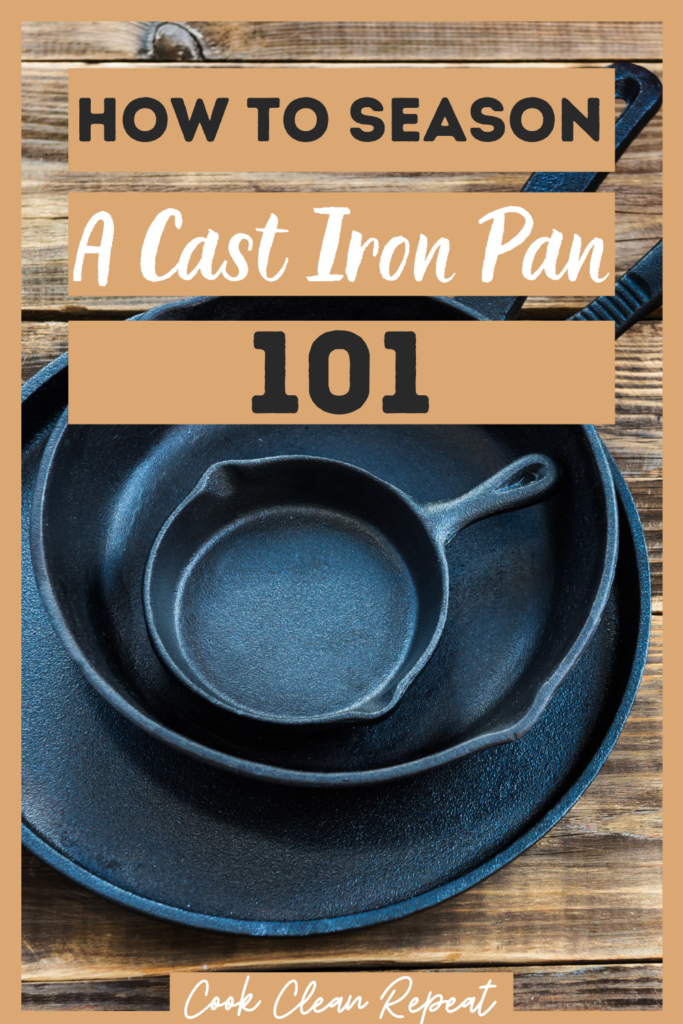
This post contains links for items to purchase. I make a commission on any sales.
What is cast iron cookware and how would I know it’s well-seasoned?
First things first, cast iron cookware is made of a durable heavy metal called cast iron. Apart from being almost indestructible, cast iron is also known for being a great heat conductor, making this type of cookware an excellent kitchen tool not just for cooking but baking as well.
A well-seasoned piece of cast iron cookware should have a dark semi-gloss finish that is smooth to touch and doesn’t have any dry or dull spots. The best and the easiest way to test if a cast iron pan is well-seasoned is to fry an egg in it with one tablespoon of vegetable oil. A well-seasoned pan should not allow for any major sticking.
You can cook anything with your cast iron pan, but if it’s new or rusty and you know it’s not well-seasoned yet, it is best to avoid cooking sticky and acidic foods on it in the meantime.
You can start by sauteing vegetables, frying bacon, and baking some cornbread. They will be a great help in adding seasoning to your skillet.

What is seasoning?
Seasoning describes the hard coating or the black patina on the cast iron that is formed through the process of polymerization. Polymerization takes place when thin layers of fat (such as oil) are heated in the cast iron. As the fat is heated, it bonds to the metal and converts itself into a type of glaze.
Apart from creating a naturally non-sticking and smooth cooking surface, seasoning also prevents the pan from corrosion and rusting. Cooking in your cast iron cookware is the natural way to season it. However, if your cast iron pan is new or it’s the other way around (a bit old and rusty), you have to consider seasoning it in the oven.
All in all, the seasoning will not only make your cooking experience easier but will also hugely help in preserving your cast iron pan. This is why well-seasoned cast iron cookware lasts for several generations.
Looking for more posts about cleaning, organizing, and more?
Here are some other posts that I think you’ll want to check out!
- Cleaning with Tea Bags 101: How to Use Tea Bags for Cleaning
- Tips For Cleaning A Misto Oil Sprayer
- Simple Tips for Cleaning With Limes
- How To Clean Non Stick Cookie Sheets
- How to Organize Your Purse Like a Boss!
- Easy Ways to Organize the Laundry Room
How to season a cast iron pan in the oven:
Seasoning a cast iron pan in the oven is easier than you think. Check out this simple step-by-step procedure!
Step 1: Cleaning
Before you proceed in seasoning your cast iron pan, it’s important to clean it first. Whether you bought it new or you found it in a thrift store, it requires a little cleaning because who knows what happened to it before it reached your kitchen?
It’s not true that it’s wrong to use soap in cleaning cast iron cookware. For your first cast iron cleaning, scrub your pan with baking soda and warm water. Rinse it after and dry it thoroughly with a lint-free cloth or a paper towel.
To make sure that your skillet is completely dry, place it on the stove or in the oven for five minutes on low heat. This will evaporate any remaining moisture quickly!
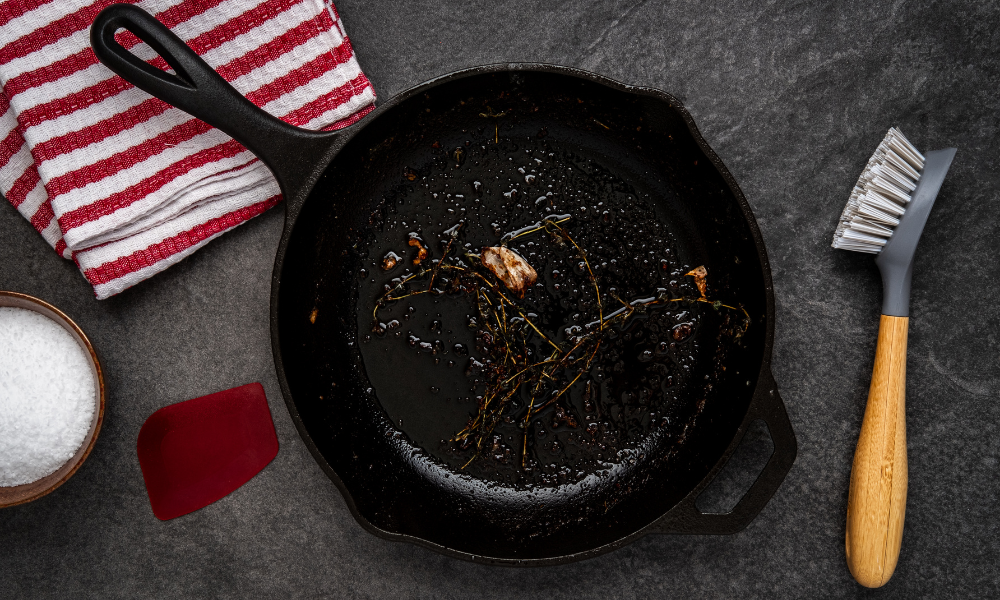
Step 2: Applying Oil
After completely drying your cast iron pan, apply a thin layer of cooking oil all over it, inside and out, including the handle. You can use canola, vegetable, or corn oil, but there are also available seasoning oil products you can find online. I’ve listed some of them below.
You can spray the oil on or put a 1/8 teaspoon of oil on your skillet’s cooking surface. Make sure not to add too much oil. Buff it thoroughly with a lint-free paper towel or cloth so it won’t end up sticky.
When done, your skillet should look dry with a dull matte finish.
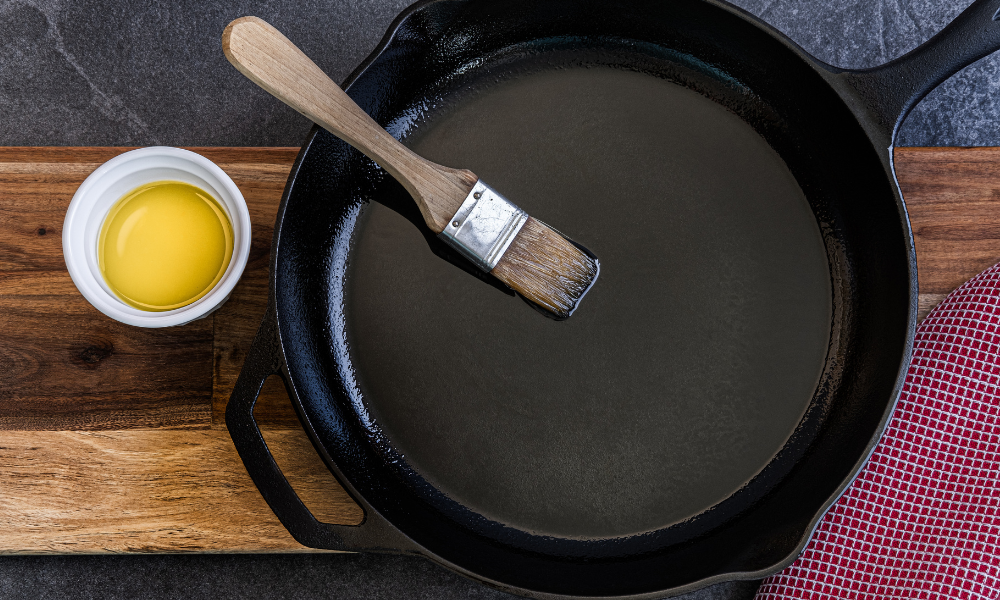
Step 3: Baking Your Cast Iron Pan
Before baking your skillet, put an aluminum foil or baking sheet first on the bottom rack of the oven so they can catch any excess oil that might drip from the cast iron pan.
Preheat your oven to 350°F – 450°F, and put your cast iron pan inside upside down. This will prevent the oil from pooling on the skillet’s cooking surface.
Bake it for an hour and let it cool in the oven. You can repeat this process several times, but the best way to continue seasoning your cast iron pan is through the natural way: cooking.

How can I maintain my cast iron pan?
You don’t always have to oven-season your cast iron cookware. Frequently using it for cooking will speed up the seasoning process. There are a few other things you should take note of when it comes to maintaining your cast iron pan:
Soaking your cast iron pan in water is a big NO. To remove stubborn stuck-on food, rinse the pan under warm water and scrub it with a nylon brush or use a pan scraper. On the other hand, to remove rust, you need to use steel wool and soap to cleanse your cast iron pan.

Remember to always dry your cast iron cookware thoroughly after washing it to avoid developing rust. You can your cast iron cookware in the oven or on the stovetop for a few minutes to dry up the water residue.



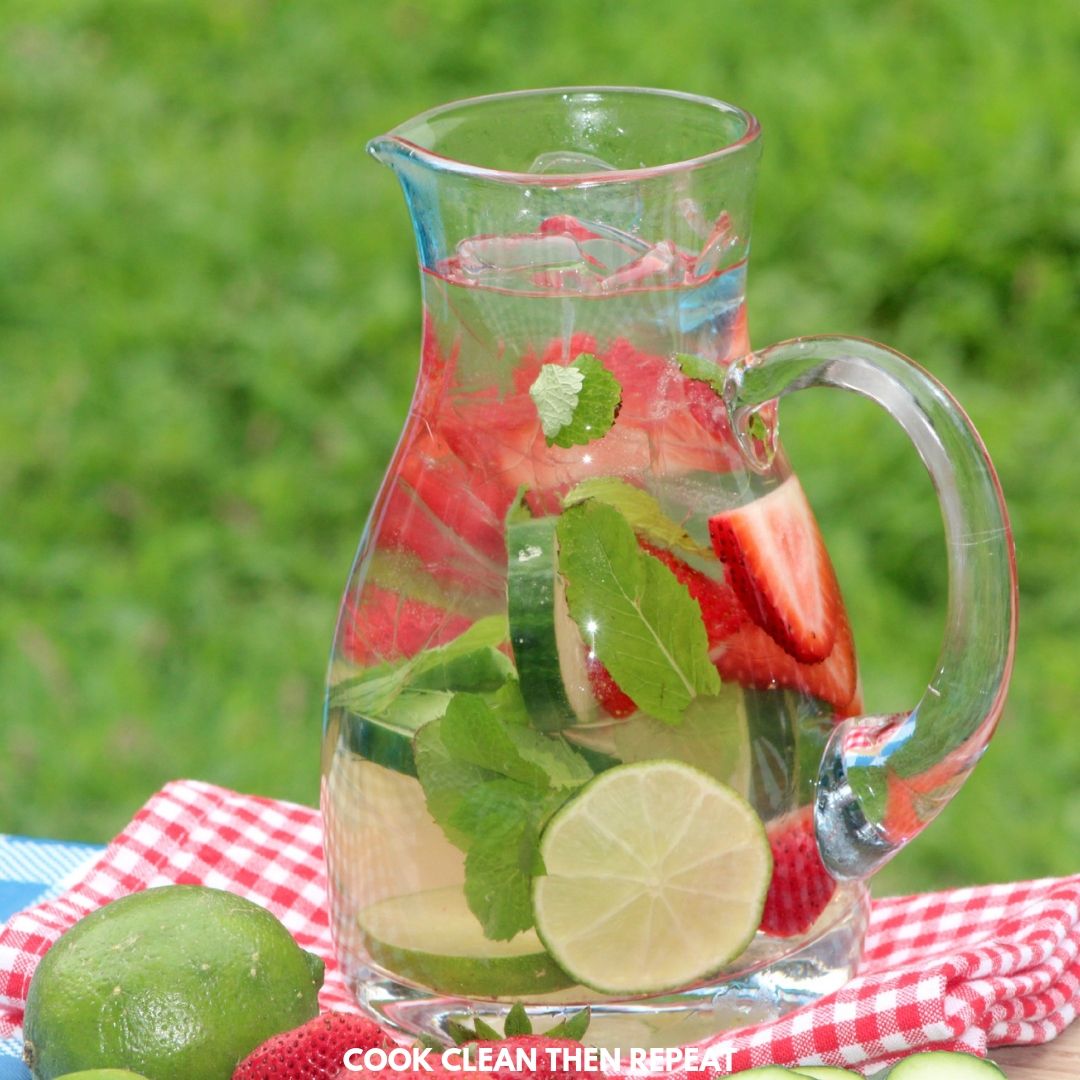

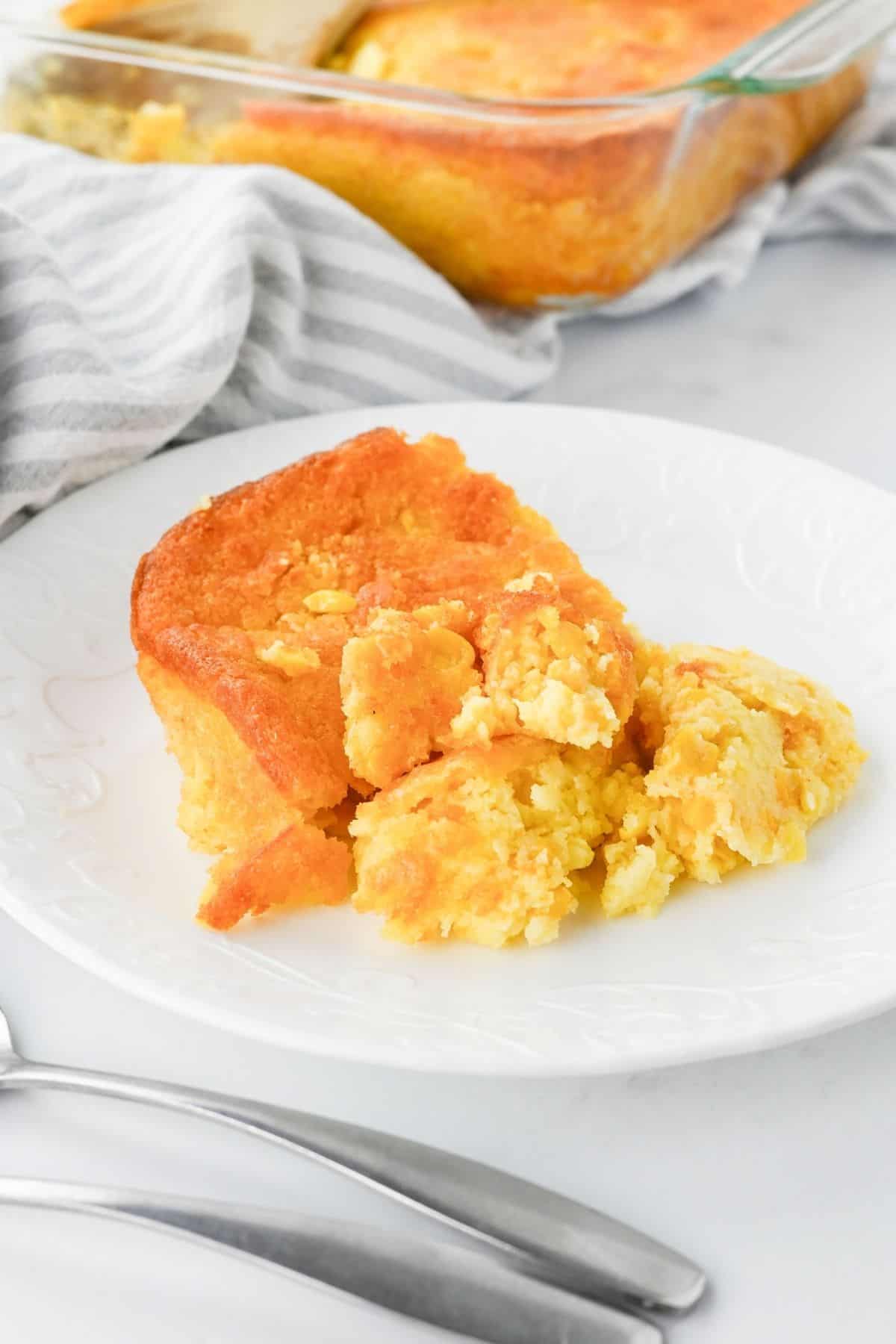
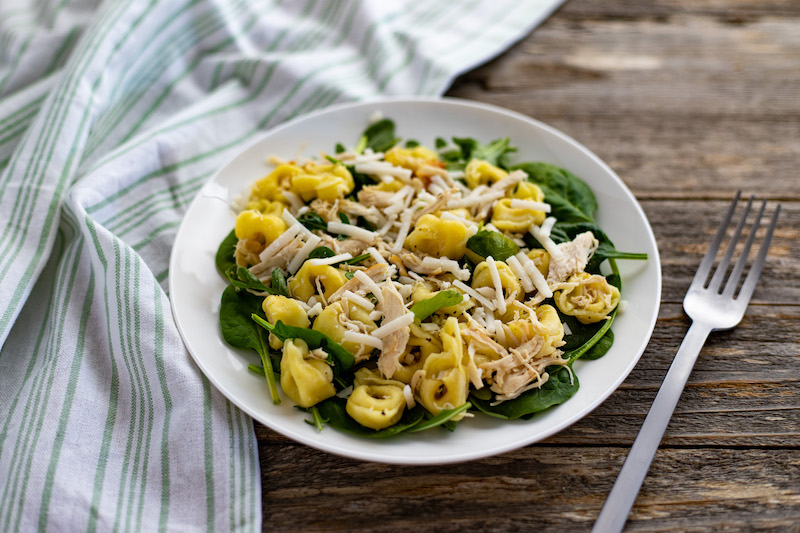
“You can your cast iron cookware in the over”
What does that mean?
That is supposed to say oven. Thanks for catching that.
What about a 20gt.dutchoven
I would think that as long as it’s made from cast iron the process and tips would work well for your dutch oven!